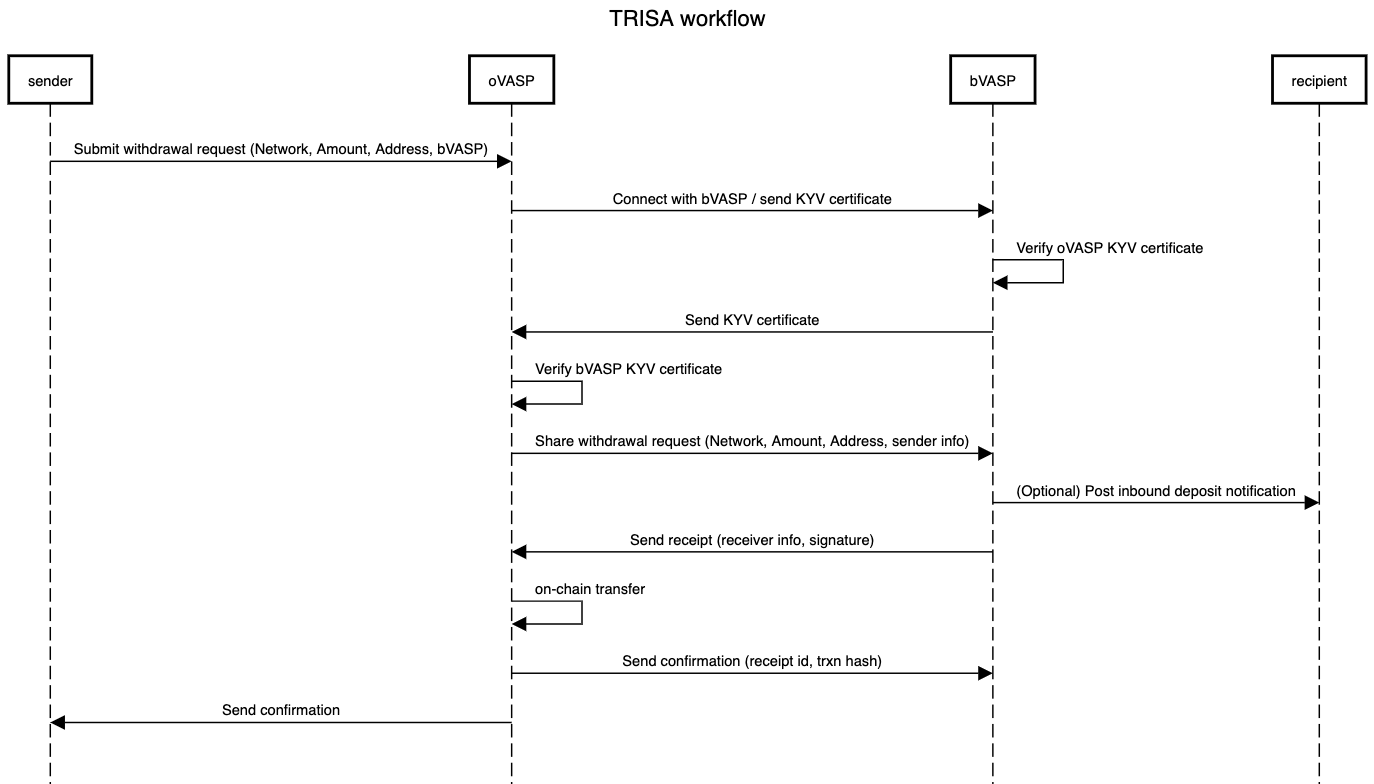Travel Rule Information Sharing Architecture (TRISA)
Overview
TRISA was developed by CipherTrace (acquired by MasterCard) and is one of the earliest travel rule protocols to exist. TRISA applies trusted public key infrastructure to identify and verify VASPs. It is similar to the way clients and servers establish trusted communication on the web and other internet applications.
TRISA revolves around two centralized entities: a certificate authority (CA) that issues TRISA Know-Your-VASP certificates, and a VASP directory. The actual travel rule data is exchanged between VASPs in a peer-to-peer fashion via a secure mTLS communication channel using gRPC.
Transfer workflow(s)

Sequence diagram text file
To generate or update the diagram above, paste the following into https://sequencediagram.org/
title TRISA workflow
sender->oVASP: Submit withdrawal request (Network, Amount, Address, bVASP)
oVASP->bVASP: Connect with bVASP / send KYV certificate
bVASP->bVASP: Verify oVASP KYV certificate
bVASP->oVASP: Send KYV certificate
oVASP->oVASP: Verify bVASP KYV certificate
oVASP->bVASP: Share withdrawal request (Network, Amount, Address, sender info)
bVASP->recipient: (Optional) Post inbound deposit notification
bVASP->oVASP: Send receipt (receiver info, signature)
oVASP->oVASP: on-chain transfer
oVASP->bVASP: Send confirmation (receipt id, trxn hash)
oVASP->sender: Send confirmationFurther reference
-
Bilateral Anti-Entropy for Eventual Consistency - This paper explores the behavior of the GDS ("Global Directory Service"), an eventually consistent system deployed in production clusters across the US, Germany, and Singapore.